Signal Processing
Acquisition and processing of information.
Our research in the area of signal processing encompasses a wide range of work in the areas of communications, sensing, estimation, localization, and speech and visual information processing. We explore novel approaches for signal acquisition and coding, methods to filter and recover signals in the presence of noise and other degrading factors, and techniques that infer meaning from the processed signals.
Quick Links
-
Researchers
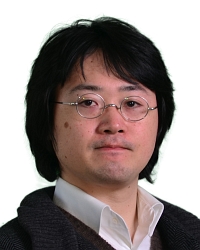
Toshiaki
Koike-Akino

Philip V.
Orlik

Kieran
Parsons

Pu
(Perry)
Wang
Ye
Wang
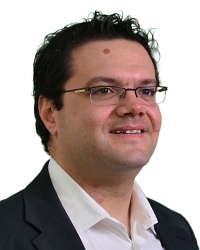
Petros T.
Boufounos

Hassan
Mansour

Stefano
Di Cairano

Dehong
Liu

Jianlin
Guo

Bingnan
Wang

Yebin
Wang

Joshua
Rapp
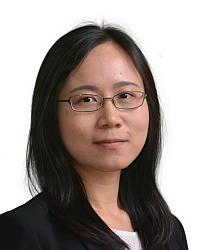
Yanting
Ma
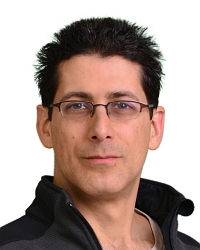
Matthew
Brand

Chungwei
Lin

Hongbo
Sun
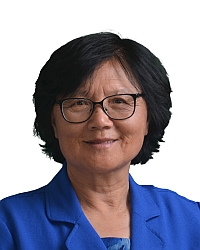
Jinyun
Zhang

Suhas Anand
Lohit

Tim K.
Marks

Anthony
Vetro

Avishai
Weiss
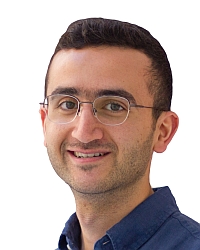
Wael H.
Ali

Vedang M.
Deshpande
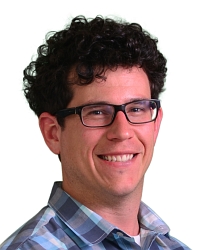
Abraham
Goldsmith

Jonathan
Le Roux

Saviz
Mowlavi

Abraham P.
Vinod

William S.
Yerazunis
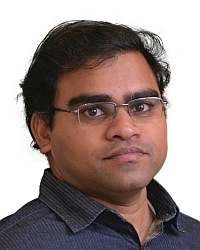
Anoop
Cherian

Radu
Corcodel
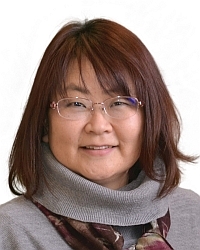
Chiori
Hori

Pedro
Miraldo

Huifang
Sun
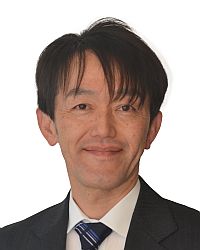
Kenji
Inomata

Jing
Liu
-
Awards
-
AWARD MERL intern and Researchers wins 2025 IEEE CCTA Best Student Paper Award Date: August 27, 2025
Awarded to: Yingjie Hu (Student, Intern), Karl Berntorp, Stefano Di Cairano (MERL Researchers)
MERL Contact: Stefano Di Cairano
Research Areas: Control, Dynamical Systems, Signal ProcessingBrief- MERL intern Yingjie Hu was recognized as the winner of the 2025 IEEE CCTA Best Student Paper Award for the paper "Optimal Measurement Projection in GNSS-RTK Factor Graph Optimization" written in collaboration with MERL Researchers Karl Berntorp and Stefano Di Cairano during the internship at MERL
The paper develops methods for measurement projections for reducing the computational burden of factor graph optimization algorithms in GNSS applications, thus enabling their use in real-time in a wider range of positioning applications.
The IEEE Conference on Control Technology and Application is the conference of the IEEE Control Systems Society focused on applications and technological advances of control systems
- MERL intern Yingjie Hu was recognized as the winner of the 2025 IEEE CCTA Best Student Paper Award for the paper "Optimal Measurement Projection in GNSS-RTK Factor Graph Optimization" written in collaboration with MERL Researchers Karl Berntorp and Stefano Di Cairano during the internship at MERL
-
AWARD Best paper award at PHMAP 2023 Date: September 14, 2023
Awarded to: Dehong Liu, Anantaram Varatharajan, and Abraham Goldsmith
MERL Contacts: Abraham Goldsmith; Dehong Liu
Research Areas: Electric Systems, Signal ProcessingBrief- MERL researchers Dehong Liu, Anantaram Varatharajan, and Abraham Goldsmith were awarded one of three best paper awards at Asia Pacific Conference of the Prognostics and Health Management Society 2023 (PHMAP23) held in Tokyo from September 11th to 14th, 2023, for their co-authored paper titled 'Extracting Broken-Rotor-Bar Fault Signature of Varying-Speed Induction Motors.'
PHMAP is a biennial international conference specialized in prognostics and health management. PHMAP23 attracted more than 300 attendees from worldwide and published more than 160 regular papers from academia and industry including aerospace, production, civil engineering, electronics, and so on.
- MERL researchers Dehong Liu, Anantaram Varatharajan, and Abraham Goldsmith were awarded one of three best paper awards at Asia Pacific Conference of the Prognostics and Health Management Society 2023 (PHMAP23) held in Tokyo from September 11th to 14th, 2023, for their co-authored paper titled 'Extracting Broken-Rotor-Bar Fault Signature of Varying-Speed Induction Motors.'
-
AWARD MERL’s Paper on Wi-Fi Sensing Earns Top 3% Paper Recognition at ICASSP 2023, Selected as a Best Student Paper Award Finalist Date: June 9, 2023
Awarded to: Cristian J. Vaca-Rubio, Pu Wang, Toshiaki Koike-Akino, Ye Wang, Petros Boufounos and Petar Popovski
MERL Contacts: Petros T. Boufounos; Toshiaki Koike-Akino; Pu (Perry) Wang; Ye Wang
Research Areas: Artificial Intelligence, Communications, Computational Sensing, Dynamical Systems, Machine Learning, Signal ProcessingBrief- A MERL Paper on Wi-Fi sensing was recognized as a Top 3% Paper among all 2709 accepted papers at the 2023 IEEE International Conference on Acoustics, Speech and Signal Processing (ICASSP 2023). Co-authored by Cristian Vaca-Rubio and Petar Popovski from Aalborg University, Denmark, and MERL researchers Pu Wang, Toshiaki Koike-Akino, Ye Wang, and Petros Boufounos, the paper "MmWave Wi-Fi Trajectory Estimation with Continous-Time Neural Dynamic Learning" was also a Best Student Paper Award finalist.
Performed during Cristian’s stay at MERL first as a visiting Marie Skłodowska-Curie Fellow and then as a full-time intern in 2022, this work capitalizes on standards-compliant Wi-Fi signals to perform indoor localization and sensing. The paper uses a neural dynamic learning framework to address technical issues such as low sampling rate and irregular sampling intervals.
ICASSP, a flagship conference of the IEEE Signal Processing Society (SPS), was hosted on the Greek island of Rhodes from June 04 to June 10, 2023. ICASSP 2023 marked the largest ICASSP in history, boasting over 4000 participants and 6128 submitted papers, out of which 2709 were accepted.
- A MERL Paper on Wi-Fi sensing was recognized as a Top 3% Paper among all 2709 accepted papers at the 2023 IEEE International Conference on Acoustics, Speech and Signal Processing (ICASSP 2023). Co-authored by Cristian Vaca-Rubio and Petar Popovski from Aalborg University, Denmark, and MERL researchers Pu Wang, Toshiaki Koike-Akino, Ye Wang, and Petros Boufounos, the paper "MmWave Wi-Fi Trajectory Estimation with Continous-Time Neural Dynamic Learning" was also a Best Student Paper Award finalist.
See All Awards for Signal Processing -
-
News & Events
-
NEWS MERL Researchers at NeurIPS 2025 presented 2 conference papers, 5 workshop papers, and organized a workshop. Date: December 2, 2025 - December 7, 2025
Where: San Diego
MERL Contacts: Petros T. Boufounos; Anoop Cherian; Radu Corcodel; Stefano Di Cairano; Chiori Hori; Christopher R. Laughman; Suhas Anand Lohit; Pedro Miraldo; Saviz Mowlavi; Kuan-Chuan Peng; Arvind Raghunathan; Diego Romeres; Yuki Shirai; Abraham P. Vinod; Pu (Perry) Wang
Research Areas: Artificial Intelligence, Computational Sensing, Computer Vision, Control, Data Analytics, Dynamical Systems, Machine Learning, Multi-Physical Modeling, Optimization, Robotics, Signal Processing, Speech & AudioBrief- MERL researchers presented 2 main-conference papers and 5 workshop papers, as well as organized a workshop, at NeurIPS 2025.
Main Conference Papers:
1) Sorachi Kato, Ryoma Yataka, Pu Wang, Pedro Miraldo, Takuya Fujihashi, and Petros Boufounos, "RAPTR: Radar-based 3D Pose Estimation using Transformer", Code available at: https://github.com/merlresearch/radar-pose-transformer
2) Runyu Zhang, Arvind Raghunathan, Jeff Shamma, and Na Li, "Constrained Optimization From a Control Perspective via Feedback Linearization"
Workshop Papers:
1) Yuyou Zhang, Radu Corcodel, Chiori Hori, Anoop Cherian, and Ding Zhao, "SpinBench: Perspective and Rotation as a Lens on Spatial Reasoning in VLMs", NeuriIPS 2025 Workshop on SPACE in Vision, Language, and Embodied AI (SpaVLE) (Best Paper Runner-up)
2) Xiaoyu Xie, Saviz Mowlavi, and Mouhacine Benosman, "Smooth and Sparse Latent Dynamics in Operator Learning with Jerk Regularization", Workshop on Machine Learning and the Physical Sciences (ML4PS)
3) Spencer Hutchinson, Abraham Vinod, François Germain, Stefano Di Cairano, Christopher Laughman, and Ankush Chakrabarty, "Quantile-SMPC for Grid-Interactive Buildings with Multivariate Temporal Fusion Transformers", Workshop on UrbanAI: Harnessing Artificial Intelligence for Smart Cities (UrbanAI)
4) Yuki Shirai, Kei Ota, Devesh Jha, and Diego Romeres, "Sim-to-Real Contact-Rich Pivoting via Optimization-Guided RL with Vision and Touch", Worskhop on Embodied World Models for Decision Making
5) Mark Van der Merwe and Devesh Jha, "In-Context Policy Iteration for Dynamic Manipulation", Workshop on Embodied World Models for Decision Making
Workshop Organized:
MERL members co-organized the Multimodal Algorithmic Reasoning (MAR) Workshop (https://marworkshop.github.io/neurips25/). Organizers: Anoop Cherian (Mitsubishi Electric Research Laboratories), Kuan-Chuan Peng (Mitsubishi Electric Research Laboratories), Suhas Lohit (Mitsubishi Electric Research Laboratories), Honglu Zhou (Salesforce AI Research), Kevin Smith (Massachusetts Institute of Technology), and Joshua B. Tenenbaum (Massachusetts Institute of Technology).
- MERL researchers presented 2 main-conference papers and 5 workshop papers, as well as organized a workshop, at NeurIPS 2025.
-
NEWS MERL Papers, Workshops, and Talks at ICCV 2025 Date: October 19, 2025 - October 23, 2025
Where: Honolulu, HI, USA
MERL Contacts: Petros T. Boufounos; Anoop Cherian; Toshiaki Koike-Akino; Hassan Mansour; Tim K. Marks; Pedro Miraldo; Kuan-Chuan Peng; Pu (Perry) Wang
Research Areas: Artificial Intelligence, Computer Vision, Machine Learning, Signal ProcessingBrief- MERL researchers presented 3 conference papers and 3 workshop papers, co-organized 2 workshops, and delivered 2 invited talks at the IEEE International Conference on Computer Vision (ICCV) 2025, which was held in Honolulu, HI, USA from October 19-23, 2025. ICCV is one of the most prestigious and competitive international conferences in the area of computer vision. Details of MERL contributions are provided below:
Main Conference Papers:
1. "SAC-GNC: SAmple Consensus for adaptive Graduated Non-Convexity" by V. Piedade, C. Sidhartha, J. Gaspar, V. M. Govindu, and P. Miraldo. (Highlight Paper)
Paper: https://www.merl.com/publications/TR2025-146
2. "Toward Long-Tailed Online Anomaly Detection through Class-Agnostic Concepts" by C.-A. Yang, K.-C. Peng, and R. A. Yeh.
Paper: https://www.merl.com/publications/TR2025-124
3. "Manual-PA: Learning 3D Part Assembly from Instruction Diagrams" by J. Zhang, A. Cherian, C. Rodriguez-Opazo, W. Deng, and S. Gould.
Paper: https://www.merl.com/publications/TR2025-139
MERL Co-Organized Workshops:
1. "The Workshop on Anomaly Detection with Foundation Models (ADFM)" by K.-C. Peng, Y. Zhao, and A. Aich.
Workshop link: https://adfmw.github.io/iccv25/
2. "The 8th International Workshop on Computer Vision for Physiological Measurement (CVPM)" by D. McDuff, W. Wang, S. Stuijk, T. Marks, H. Mansour, V. R. Shenoy.
Workshop link: https://sstuijk.estue.nl/cvpm/cvpm25/
MERL Keynote Talks at Workshops:
1. Tim K. Marks, Keynote Speaker at the Workshop on Computer Vision for Physiological Measurement (CVPM).
Workshop website: https://vineetrshenoy.github.io/cvpmSeptember2025/
2. Tim K. Marks, Keynote Speaker at the Workshop on Analysis and Modeling of Faces and Gestures (AMFG).
Workshop website: https://fulab.sites.northeastern.edu/amfg2025/
Workshop Papers:
1. "Joint Training of Image Generator and Detector for Road Defect Detection" by K.-C. Peng.
paper: https://www.merl.com/publications/TR2025-149
2. "Radar-Conditioned 3D Bounding Box Diffusion for Indoor Human Perception" by R. Yataka, P. Wang, P.T. Boufounos, and R. Takahashi.
paper: https://www.merl.com/publications/TR2025-154
3. "L-GGSC: Learnable Graph-based Gaussian Splatting Compression" by S. Kato, T. Koike-Akino, and T. Fujihashi.
paper: https://www.merl.com/publications/TR2025-148
- MERL researchers presented 3 conference papers and 3 workshop papers, co-organized 2 workshops, and delivered 2 invited talks at the IEEE International Conference on Computer Vision (ICCV) 2025, which was held in Honolulu, HI, USA from October 19-23, 2025. ICCV is one of the most prestigious and competitive international conferences in the area of computer vision. Details of MERL contributions are provided below:
See All News & Events for Signal Processing -
-
Research Highlights
-
Internships
-
ST0231: Internship - Radar-based Perception and Generation
-
ST0229: Internship - Interacting Particle Systems for Inverse Problems
-
CI0197: Internship - Embodied AI & Humanoid Robotics
See All Internships for Signal Processing -
-
Openings
-
CI0177: Postdoctoral Research Fellow - Agentic AI
-
ST0175: Postdoctoral Research Fellow - Quantum Technologies
See All Openings at MERL -
-
Recent Publications
- , "A dual ensemble Kalman filter approach to robust control of nonlinear systems: An application to partial differential equations", IEEE Conference on Decision and Control (CDC), December 2025.BibTeX TR2025-172 PDF
- @inproceedings{Joshi2025dec,
- author = {Joshi, Anant and Mowlavi, Saviz and Benosman, Mouhacine},
- title = {{A dual ensemble Kalman filter approach to robust control of nonlinear systems: An application to partial differential equations}},
- booktitle = {IEEE Conference on Decision and Control (CDC)},
- year = 2025,
- month = dec,
- url = {https://www.merl.com/publications/TR2025-172}
- }
- , "Radar-Conditioned 3D Bounding Box Diffusion for Indoor Human Perception", IEEE International Conference on Computer Vision (ICCV) Workshop, October 2025.BibTeX TR2025-154 PDF
- @inproceedings{Yataka2025oct,
- author = {Yataka, Ryoma and Wang, Pu and Boufounos, Petros T. and Takahashi, Ryuhei},
- title = {{Radar-Conditioned 3D Bounding Box Diffusion for Indoor Human Perception}},
- booktitle = {IEEE International Conference on Computer Vision (ICCV) Workshop},
- year = 2025,
- month = oct,
- url = {https://www.merl.com/publications/TR2025-154}
- }
- , "Time-Series U-Net with Recurrence for Noise-Robust Imaging Photoplethysmography", IEEE Access, October 2025.BibTeX TR2025-145 PDF
- @article{Shenoy2025oct,
- author = {Shenoy, Vineet and Wu, Shaoju and Comas, Armand and Lohit, Suhas and Mansour, Hassan and Marks, Tim K.},
- title = {{Time-Series U-Net with Recurrence for Noise-Robust Imaging Photoplethysmography}},
- journal = {IEEE Access},
- year = 2025,
- month = oct,
- url = {https://www.merl.com/publications/TR2025-145}
- }
- , "Experimental Results for Indoor Positioning Based on Wi-Fi FTM and RSSI", International Conference on Information and Communication Technology Convergence, October 2025.BibTeX TR2025-144 PDF
- @inproceedings{Nakamura2025oct,
- author = {Nakamura, Koki and Ookawara, Takashi and Sunagozaka, Yudai and Hirata, Rei and Koizumi, Atsushi and Sumi, Takenori and Guo, Jianlin and Nagai, Yukimasa and Oguma, Hiroshi},
- title = {{Experimental Results for Indoor Positioning Based on Wi-Fi FTM and RSSI}},
- booktitle = {International Conference on Information and Communication Technology Convergence},
- year = 2025,
- month = oct,
- url = {https://www.merl.com/publications/TR2025-144}
- }
- , "SCC-Aided INR for High-Frequency Detail Preservation in LiDAR", IEEE Open Journal of the Communications Society (OJCOMS), September 2025.BibTeX TR2025-129 PDF
- @article{Kuwabara2025sep,
- author = {Kuwabara, Akihiro and Kato, Sorachi and Koike-Akino, Toshiaki and Fujihashi, Takuya},
- title = {{SCC-Aided INR for High-Frequency Detail Preservation in LiDAR}},
- journal = {IEEE Open Journal of the Communications Society (OJCOMS)},
- year = 2025,
- month = sep,
- url = {https://www.merl.com/publications/TR2025-129}
- }
- , "End-to-End Radar Human Segmentation with Differentiable Positional Encoding", European Signal Processing Conference (EUSIPCO), DOI: 10.23919/EUSIPCO63237.2025.11226318, August 2025.BibTeX TR2025-125 PDF
- @inproceedings{Yataka2025aug,
- author = {Yataka, Ryoma and Wang, Pu and Boufounos, Petros T. and Takahashi, Ryuhei},
- title = {End-to-End Radar Human Segmentation with Differentiable Positional Encoding},
- booktitle = {European Signal Processing Conference (EUSIPCO)},
- year = 2025,
- month = aug,
- doi = {10.23919/EUSIPCO63237.2025.11226318},
- isbn = {978-9-4645-9362-4},
- url = {https://www.merl.com/publications/TR2025-125}
- }
- , "Optimal Measurement Projection in GNSS-RTK Factor Graph Optimization", IEEE Conference on Control Technology and Applications (CCTA), DOI: 10.1109/CCTA53793.2025.11151373, August 2025.BibTeX TR2025-118 PDF
- @inproceedings{Hu2025aug,
- author = {Hu, Yingjie and {Di Cairano}, Stefano and Berntorp, Karl},
- title = {{Optimal Measurement Projection in GNSS-RTK Factor Graph Optimization}},
- booktitle = {IEEE Conference on Control Technology and Applications (CCTA)},
- year = 2025,
- month = aug,
- doi = {10.1109/CCTA53793.2025.11151373},
- url = {https://www.merl.com/publications/TR2025-118}
- }
- , "Dynamic Sensor Scheduling for Spatio-temporal Monitoring of Water Bodies", IEEE Conference on Control Technology and Applications (CCTA), DOI: 10.1109/CCTA53793.2025.11151521, August 2025, pp. 673-680.BibTeX TR2025-117 PDF
- @inproceedings{Deshpande2025aug,
- author = {Deshpande, Vedang M. and Vinod, Abraham P.},
- title = {{Dynamic Sensor Scheduling for Spatio-temporal Monitoring of Water Bodies}},
- booktitle = {2025 IEEE Conference on Control Technology and Applications (CCTA)},
- year = 2025,
- pages = {673--680},
- month = aug,
- doi = {10.1109/CCTA53793.2025.11151521},
- url = {https://www.merl.com/publications/TR2025-117}
- }
- , "A dual ensemble Kalman filter approach to robust control of nonlinear systems: An application to partial differential equations", IEEE Conference on Decision and Control (CDC), December 2025.
-
Videos
-
Software & Data Downloads
-

Learned Born Operator for Reflection Tomographic Imaging -

Radar-based 3D Pose Estimation using Transformer -

Stabilizing Subject Transfer in EEG Classification with Divergence Estimation -

Radar dEtection TRansformer -

Millimeter-wave Multi-View Radar Dataset -

Nonparametric Score Estimators -

Convergent Inverse Scattering using Optimization and Regularization -

One-Bit CRB
-